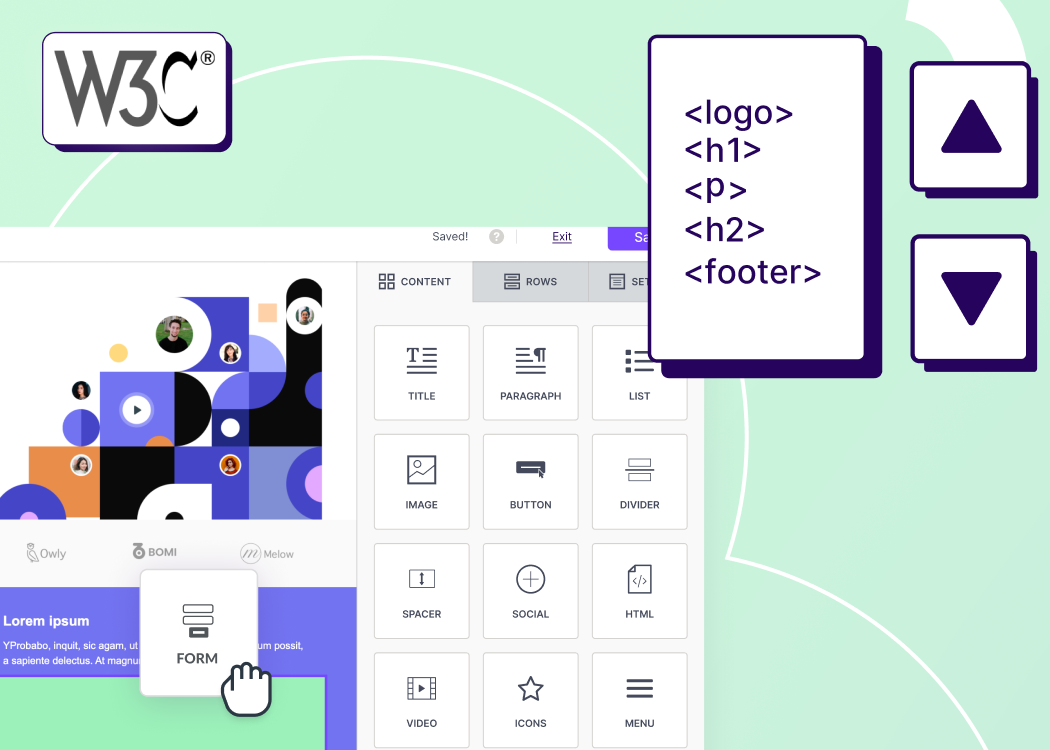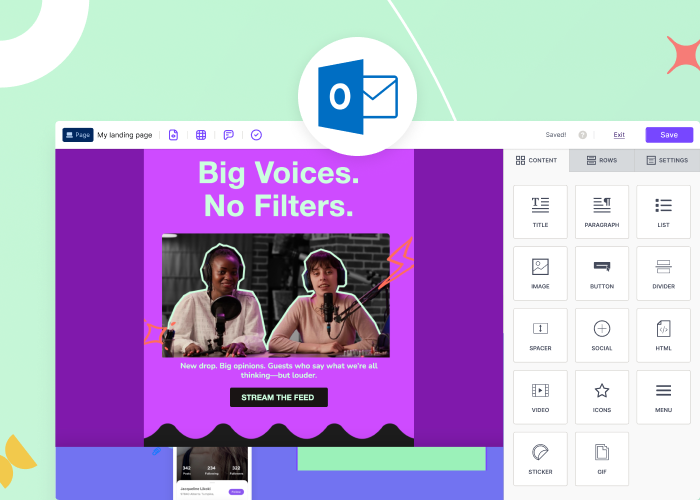As some of you may know, Beefree is a flexible workplace. Most of us are not located in the same location as our headquarters, and we are quite literally dispersed worldwide. Some of us located close to the headquarters have adopted a hybrid strategy, in which we visit the office twice or three times per week.
The way we work has changed dramatically in the last two years due to the pandemic, changing the sense and shape of the workplace as we used to know it. Beefree has been a pioneer in the approach to remote work since day one. The concept of a “dematerialized office” and remote collaboration are important topics to explore as we are experiencing them firsthand with all their advantages and challenges day-to-day. Because of this, we try to incorporate the things we’ve discovered into the products we create. Digital collaboration is one of these hot topics.
The feeling of having your communication fragmented and watered down due to the use of many tools can make remote collaboration an extremely frustrating experience. What if we provided you with a simplified solution — a single tool that would simplify your company’s online collaboration and co-creation of content? Beefree SDK is that tool.
Workplace and Digital Collaboration at a Glance
According to a study published in 2021 by Harvard Business School, remote workers:
- 27% hope to continue working remotely full-time
- 61% would like to work 2–3 days a week from home
- Only 18% want to go back to the office full-time
The report published by Ericsson (2020) titled “The Dematerialized Office” explores the employees’ perspective on the future of the workplace, where digital technology and senses will entwine. Futuristic predictions aside, one of the takeaways from the report is the pandemic can be considered “a digital tipping point,” highlighting an urgent need for tools that better support remote interactions.
Although nothing can truly replace human interaction, we can certainly make an effort to bridge the gap to ensure that the communication process does not become lost.
Harvard Business Review (2020) reports that communication tools (74%), remote work tools (74%), and collaboration tools (67%) are cited as the most important prerequisites for employees to be efficient.
The introduction of digital collaboration platforms is considered the most important factor in making remote work sustainable in spite of the COVID-19 outbreak. 39% of executives agree. (Deloitte, 2020)
Gartner’s 2021 Digital Worker Experience Survey was conducted from November through December 2020 among 10,080 full-time employees at organizations with 100 or more employees in the U.S., Europe, and Asia-Pacific. Gartner’s survey shows a 44% increase in collaboration tools use since 2019. Nearly 80% of workers in the survey indicated that they used collaboration tools for work in 2021, compared to just over half in 2019.
Changes in Digital Workplace Technology Use, 2019–2021 (Percentage of Respondents)

At Beefree, we want to support you and your users, making sure you get access to a smooth and seamless experience. So let’s run through how SDK can support your users in achieving their full potential through digital collaboration in real-time.
Quick links list:
- HBS online survey shows most professionals have excelled while working from home https://online.hbs.edu/blog/post/future-of-work-from-home
- The dematerialized office: A vision of the Internet of Senses in the 2030 future workplace https://www.ericsson.com/en/reports-and-papers/industrylab/reports/the-dematerialized-office
- Making Technology An Integral Part Of Your Employee Experience Strategy https://hbr.org/sponsored/2020/08/making-technology-an-integral-part-of-your-employee-experience-strategy
- The social enterprise in a world disrupted: leading the shift from surviving to thriving https://www2.deloitte.com/content/dam/Deloitte/lu/Documents/human-capital/lu-hc-trends-2021.pdf
- Gartner Survey Reveals a 44% Rise in Workers’ Use of Collaboration Tools Since 2019 https://www.gartner.com/en/newsroom/press-releases/2021-08-23-gartner-survey-reveals-44-percent-rise-in-workers-use-of-collaboration-tools-since-2019
Teamwork Makes the Dream Work With SDK
The most effective way to develop authentic teamwork is to co-author material together in real time. For this reason, the co-editing capability of the Beefree SDK was made available for use in November 2020.
As you know, most companies don’t have one person handling all emails, landing pages, or popup assets alone. Your users might have multiple accounts involved, located worldwide — copywriting, design, testing, reviewing. Because of this, SaaS systems often include the option to add more users or seats to a subscription, enabling more individuals to log in simultaneously and collaborate on projects.
The co-editing feature lets users achieve that: working collaboratively on an email, landing page, or popup. The changes of co-editors are synced to the stage in real time, so they can see each other’s work while working on content.

Each user in the interface is represented by a round icon at the bottom-left of the content area. Hovering the mouse over the icon will show the user’s full name.
Each time a user selects a row or a content block, it will be highlighted with the user’s color. Only one user can edit a row or block at a time to avoid conflicting edits. Users will receive a feedback message when this occurs.

Complementing the co-editing with commenting, SDK becomes an all-around, real-time collaboration solution that allows your clients’ workflow to be centralized under one roof, enabling them to create emails, landing pages, and popups without the need for endless email threads and instant chat messages all over the place.
The collaborative editing feature is available on Beefree SDK's Superpowers and Enterprise plans:
- Superpowers plans allow a maximum of 5 co-editors per session.
- Enterprise plans allow a maximum of 20 co-editors per session.
The application will only receive an error code when the limit is reached, and the editor won’t load — a notification to the user must then be added know they cannot join the editing session (e.g., “Sorry, you cannot edit this message because there are too many co-editors, please try again later”).
Even better, you can monitor sessions and disable editing for an email, popup, or landing page if you reach your limit.
Due to the complex nature of real-time collaboration, and versioning control, we had to make some specific choices when it came to the user experience:
- Load/reload: Your application won’t be able to trigger any action that overwrites the user’s changes.
- Autosave: The autosave timer is set on the instance that started the session; it’s not recommended for co-editing sessions.
- onChange: The onChange callback occurs only for the user that makes a change. For example, if user A makes a change, the onChange event fires only for their instance, and user B won’t receive the notification.
Quick list link:
- Co-editing https://docs.beefree.io/co-editing/
Latest Co-edit Update: Undo/Redo for Single-User Sessions
Thanks to our latest feature release we have improved the usability of the co-editing sessions for individual users.
Before this update, single users (that is, there was only one person in the stage) who joined a co-edit session could see the history of the document, but they were unable to revert to prior revisions of the document or undo the most recent action taken on a page. To put it another way, the co-editing session began the moment the first user joined, even though the user was working independently on the content.

The history is visible but disabled, although there is just one user in the session.
With our latest usability improvements, if the first user opens a document alone, they can still revert past actions and use the undo/redo while working on the document. This is because SDK is now able to understand if a collaborative session with more than one user has started or not.
To summarise, this is how SDK behaves when one or more users join a co-editing session.
One user starts the co-editing session (single-user co-editing session):
- History enabled and visible
- Past actions are enabled and visible, and the user can revert back to previous edits.
- Other users’ actions (if there was a past co-editing session) are disabled but visible.

The collaborative mode starts when one or more users join the first user’s session.
Two or more users join the co-editing session (multi-user co-editing session):
- History disabled and grayed out, but visible
- Undo/redo buttons are disabled and grayed out but visible

The history will always display users’ names for both individual and collaborative sessions, but the restrictions listed above will apply if two or more users are editing a document simultaneously (no revert to past edits, no undo/redo).
Real-time notifications when a new comment is added
To simplify the management of real-time collaborative sessions, your end-users can take advantage of our notification system.
By clicking on the notification, they will quickly open the comment and highlight the element where the conversation is taking place. The toast notification can be styled with custom CSS to match your application’s look and feel.

Quick links list:
- Managing notifications https://docs.beefree.io/commenting/#managing-notifications
- Custom CSS https://docs.beefree.io/custom-css/
What Are You Waiting For? Get Started Today!
With these features, you can provide users with a more efficient way of working and give them more time to spend on what matters most. Book a demo today to learn how Beefree SDK can support your business.






.webp)